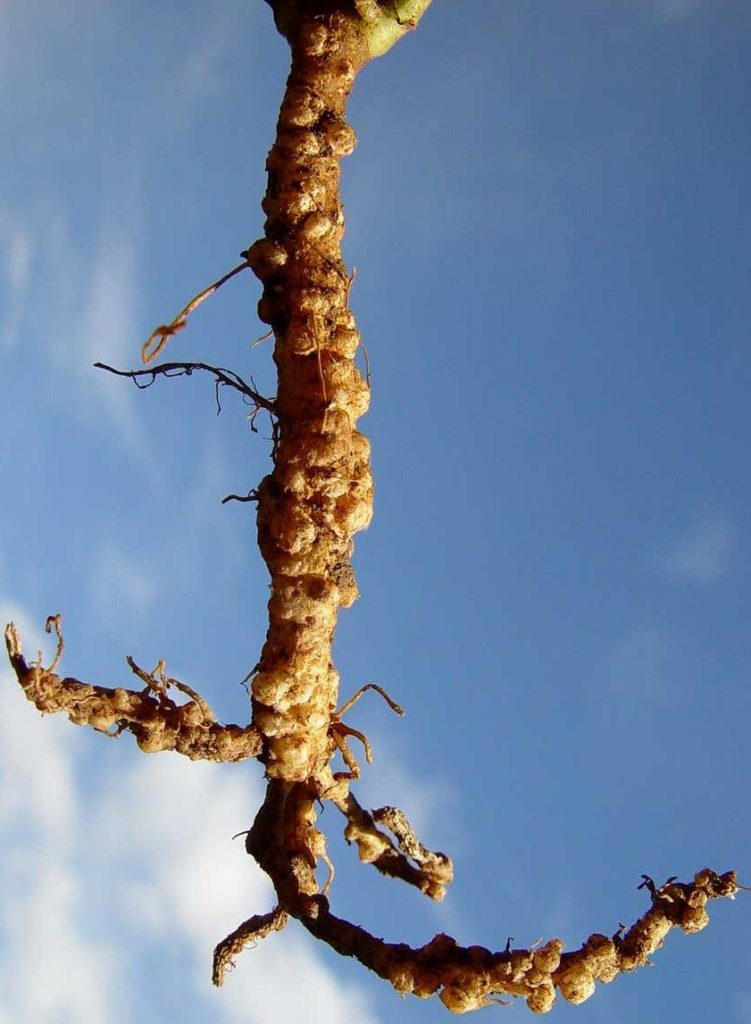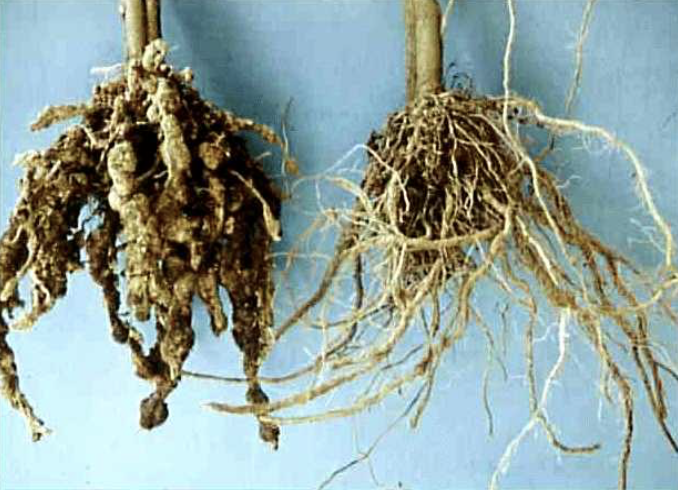Credits: Biovision-Infonet

(c) A.M. Varela, icipe
They cause stunting and yellowing of plants with a tendency to wilt in hot weather. If infested plants are pulled out from the soil, the roots can be seen to be distorted, swollen and bearing knots of various sizes. Infested roots under severe infestation decay.
These knots should not be confused with legume nodules, which are normally small and round, and are attached to the outside of the roots, whereas swellings of root-knot nematodes are within the body of the root. When active nodules are sliced, they are pinkish in colour.What to do:
- Practise a 2-3 year crop rotation with cereals, maize or grasses.
- Direct surface irrigation water from new to old bean fields.
- Maintain fields weed-free.
- Uproot and destroy entire plants after harvest.
- Amend soil with neem cake or green manure of marigold or sunnhemp.
- Maintain high levels of organic matter in the soil.
Root-knot nematodes (Meloidogyne spp.) in Watermelons

(c) A. M. Varela, icipe
Symptoms of infestation by root-knot nematodes are similar in all crops: wilting of plants and if infested plants are pulled from the soil the roots can be seen to be distorted, swollen and bearing knots. The infested roots eventually rot and affected plants die.What to do:
- Use resistant varieties, if available.
- Practise mixed cropping. Mixed cropping with African marigold (Tagetes spp.) minimises root-knot nematode damage. Intercrop with different mustards (e.g. Brassica juncea var. integrifolia or Brassica juncea var. juncea) on infested fields. As soon as mustards are flowering, they should be mulched and incorporated into the soil. Two weeks after incorporating plant material into the soil a new crop can be planted or sown (phytotoxic effects are usual if the crop is planted before two weeks).
- Maintain high levels of organic matter in the soil (manure or compost).
- Use biofumigation where possible (biofumigation involves incorporation into the soil of crop residues of crucifers, resulting in high levels of organic matter).
- Use neem extracts.